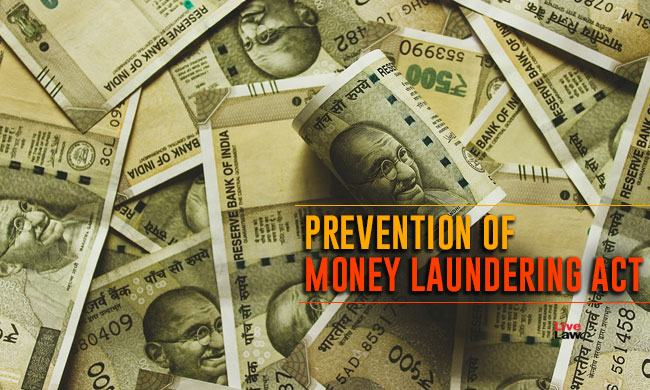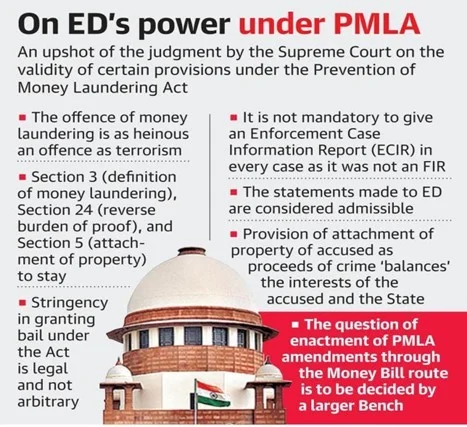Free Courses Sale ends Soon, Get It Now


Free Courses Sale ends Soon, Get It Now



Copyright infringement not intended
Picture Courtesy: https://www.livelaw.in/law-firms/law-firm-articles-/predicate-offence-prevention-of-money-laundering-act-2002-190813
Context: The anti-money laundering law expanded over time, granting the Enforcement Directorate police powers, upheld by the Supreme Court, with stringent bail conditions and broadened offences.
Details
Historical Context
|
The PMLA is designed to achieve three primary objectives ●Prevent and Control Money Laundering: By implementing measures to detect, deter, and disrupt activities associated with money laundering. ●Confiscate and Seize Proceeds of Crime: Empowering authorities to confiscate and seize properties derived from money laundering activities. ●Address Related Issues: Tackling any other concerns connected with money laundering within India. |
Expansion of ED's Powers
|
Salient Features of the ACT ●Punishment for Money Laundering: Individuals found guilty of money laundering can face rigorous imprisonment ranging from three to seven years, extendable up to ten years for certain offences. ●Attachment of Tainted Property: Authorities, under specified conditions, can provisionally attach property believed to be proceeds of crime for a designated period, subject to confirmation by an Adjudicating Authority. ●Adjudicating Authority: Responsible for determining whether attached or seized property is involved in money laundering guided by principles of natural justice and empowered to regulate its own procedures. ●Presumption in Inter-connected Transactions: In cases involving multiple inter-connected transactions, the presumption is made that all transactions within the chain are part of the money laundering activity. ●Burden of Proof: Accused individuals bear the burden of proving that alleged proceeds of crime are lawful property. ●Appellate Tribunal and Special Court: Entities designated to hear appeals against orders of the Adjudicating Authority and to try offences under the Act, respectively. |

Impact and Controversies
|
Criticisms and Judicial Interventions ●Low Conviction Rate: The law's effectiveness has been questioned, highlighted by a low conviction rate and concerns about selective targeting. ●Misuse and Targeting of Scholars/Activists: Allegations of misuse against political rivals or dissenters raise concerns about the law's application and potential threats to freedom of speech. ●Judicial Scrutiny and Amendments: Judicial interventions, such as the Supreme Court's rulings and subsequent reviews, aim to address concerns regarding personal liberty, procedural fairness, and the scope of ED's powers. |
Upheld by the Supreme Court
Conclusion
Must Read Articles:
Prevention of Money Laundering Act
Source:
|
PRACTICE QUESTION Q. The Prevention of Money Laundering Act (PMLA) has been amended several times over the years, with some arguing for stricter measures and others advocating for a more balanced approach. Critically evaluate the impact of these amendments on the effectiveness of the PMLA in achieving its objectives. Consider the potential unintended consequences and suggest alternative approaches for future amendments. |
© 2024 iasgyan. All right reserved